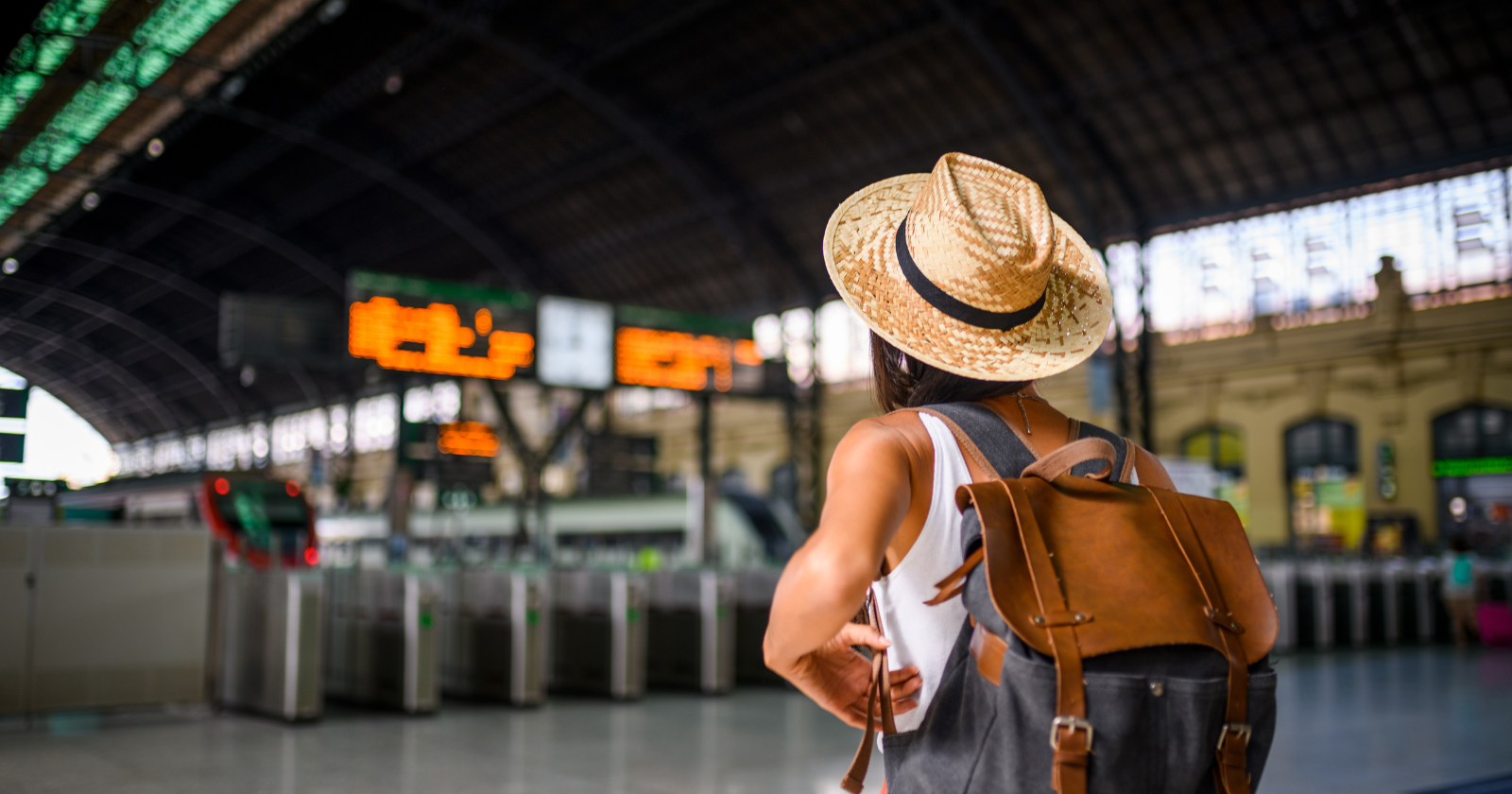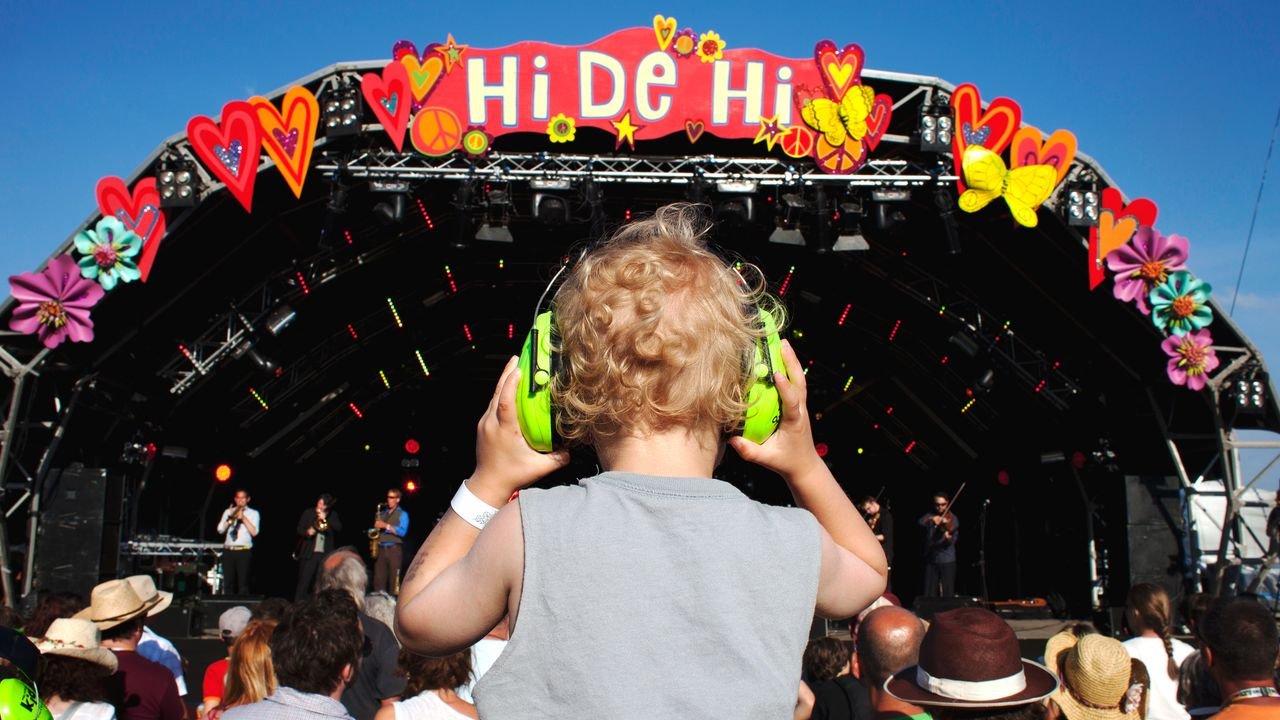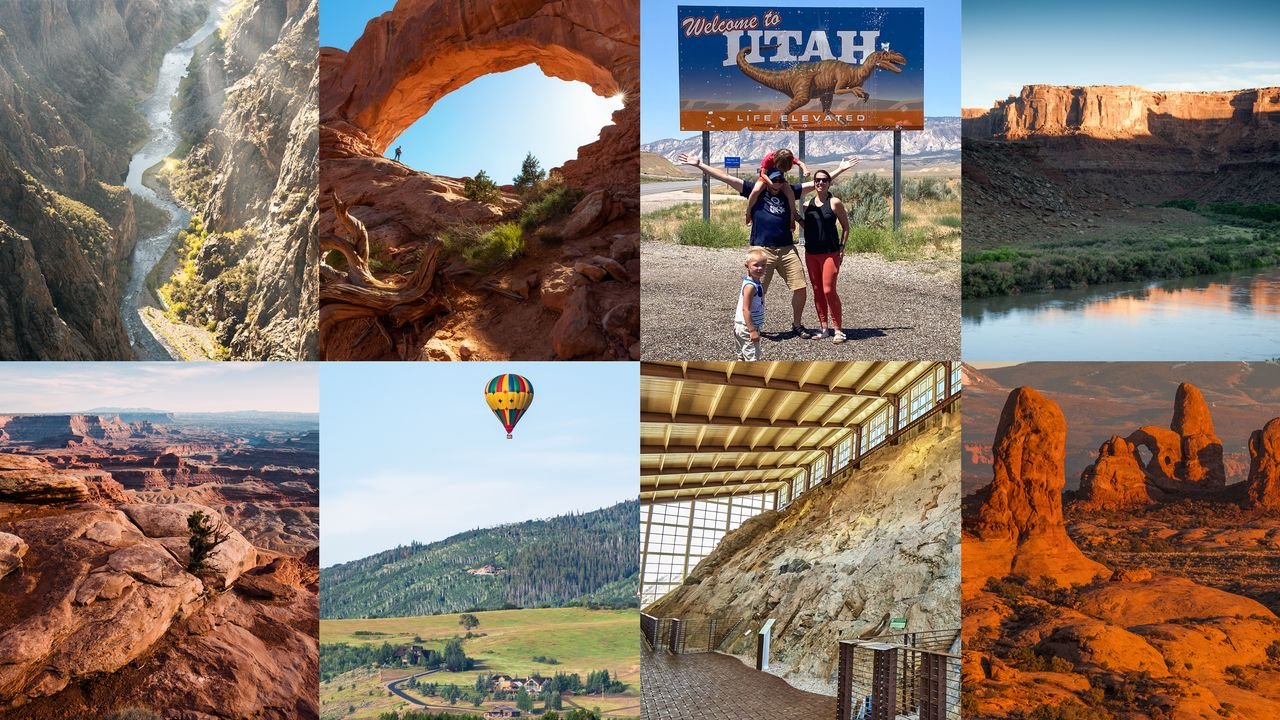Solo Travellers
5 lessons from traveling solo that have made me stronger, smarter, and more successful

Ever stood at the edge of a train platform in a foreign country, ticket in hand, with no one but yourself to rely on?
That moment—equal parts terrifying and exhilarating—is exactly where the magic happens. Solo travel isn’t just about Instagram-worthy photos or checking destinations off your bucket list. It’s a masterclass in personal development that no boardroom or self-help book can replicate.
I stumbled into solo travel almost by accident. A planned group trip to Portugal fell through when my friends backed out last minute, but I’d already requested the time off work. Instead of canceling, I decided to go anyway. Best decision I ever made.
That trip—and the dozen solo adventures that followed—taught me more about resilience, decision-making, and self-reliance than my years as a financial analyst ever did. The lessons I learned while navigating foreign cities, dealing with missed connections, and finding my way through language barriers have shaped how I approach challenges in every area of my life.
Here are the five most powerful lessons that transformed me from someone who couldn’t order coffee without anxiety into someone who tackles uncertainty head-on.
1. You’re more resourceful than you think
Picture this: you’re in a small town in rural Spain, your phone is dead, and the last bus to your hotel left an hour ago.
The panic that sets in? That’s your brain telling you you’re helpless. But here’s what solo travel teaches you—you’re not.
When you strip away your usual support systems, something remarkable happens. Your brain shifts into problem-solving mode. You start noticing things you’d normally miss—the kind stranger willing to help, the alternative route you hadn’t considered, the creative solution hiding in plain sight.
During that Portugal trip, I found myself stranded at a train station after missing my connection. No wifi, limited language skills, and a growing sense of dread.
But instead of panicking, I started observing. I watched other travelers, noticed the information boards, and eventually figured out how to get to my destination using a combination of local buses and a shared taxi with fellow travelers.
That experience rewired something in my brain. Back home, when faced with challenging projects or unexpected setbacks, I stopped immediately reaching for help and started asking myself: “What resources do I already have? What am I not seeing?”
The confidence that comes from knowing you can figure things out—truly knowing it, not just believing it—changes how you show up in every situation. You take on bigger challenges because you trust your ability to navigate them.
2. Discomfort is a compass, not a roadblock
Most of us spend our lives avoiding discomfort. We stick to familiar routines, order the same dishes, take the same routes to work. But solo travel forces you into uncomfortable situations daily—and that’s where the growth happens.
I used to be the person who’d rather go hungry than ask for directions. The thought of approaching strangers, especially in a different language, made my palms sweaty. But when you’re wandering through the winding streets of Marrakech with a grumbling stomach, your discomfort with asking for help becomes less important than your need to eat.
Each time I pushed through that discomfort—asking for directions, negotiating prices at markets, striking up conversations with fellow travelers—I expanded my comfort zone. More importantly, I learned that discomfort and vulnerability often signals opportunity.
One of my favorite authors, Brené Brown, captures this perfectly: “You can’t get to courage without rumbling with vulnerability.”
This lesson transformed my professional life. Instead of avoiding challenging presentations or difficult conversations with colleagues, I started leaning into them.
That promotion I’d been hesitant to pursue? I went for it. The networking events that made me nervous? I showed up anyway.
Discomfort stopped being something to avoid and became something to investigate. What is this feeling trying to tell me? What opportunity might be hiding behind this fear?
3. Decision-making becomes second nature
When you’re traveling solo, you make hundreds of micro-decisions every day. Which cafe for breakfast? Left or right at this intersection? Stay another day or move on to the next city?
There’s no committee to consult, no one to blame if things go wrong.
At first, this felt overwhelming. I’d stand paralyzed in front of restaurant menus, terrified of making the “wrong” choice. But here’s what I discovered—most decisions aren’t as critical as we make them out to be, and the ones that are become obvious with practice.
You develop what I call decision confidence. Not because you always make perfect choices, but because you learn to trust your judgment and adapt when things don’t go as planned.
I remember spending an entire afternoon in Barcelona debating whether to visit the Picasso Museum or explore the Gothic Quarter. Finally, I realized I was wasting precious time on a decision that had no truly wrong answer. I picked one, enjoyed it thoroughly, and made a mental note to visit the other next time.
This skill proved invaluable when I returned to my day-to-day. Instead of getting bogged down in endless pros-and-cons lists, I learned to gather the essential information, trust my instincts, and move forward. My colleagues even started noticing how quickly I could assess situations and make solid recommendations.
The secret isn’t making perfect decisions—it’s making decisions quickly and adapting as you go.
4. Authentic connections happen when you drop the mask
There’s something liberating about being somewhere no one knows you. You can shed the roles and expectations that usually define you—the reliable friend, the perfectionist employee, the person who always has it together.
On a solo hiking trip in the Scottish Highlands, I struck up a conversation with an elderly gentleman at a remote pub. We talked for hours about everything from career changes to the meaning of happiness. I found myself sharing thoughts and dreams I’d never voiced before, not because he was a therapist or life coach, but because there was no pretense between us.
That authenticity is magnetic. When you drop the performance and just show up as yourself—uncertain, curious, sometimes scared—people respond to that realness. I’ve had more meaningful conversations with strangers in coffee shops abroad than I’d had with some acquaintances I’d known for years.
As noted by researcher and author Susan David, “Courage is not the absence of fear; courage is fear walking.” When you travel solo, you’re constantly walking with fear—fear of getting lost, of looking foolish, of being uncomfortable—and that courage becomes visible to others.
This lesson completely changed how I network and build relationships. Instead of trying to impress people with polished versions of myself, I started showing up authentically. I shared my struggles with career transitions, admitted when I didn’t know something, and asked genuine questions about others’ experiences.
The connections I’ve built since—both personal and professional—are deeper and more meaningful because they’re based on truth rather than performance.
5. You learn to trust your inner voice
In our hyper-connected world, we rarely experience true solitude. There’s always someone to text, call, or scroll through on social media.
Traveling alone, however, creates pockets of genuine alone time—long train rides, quiet mornings in hotel rooms, solo meals with nothing but your thoughts for company.
Initially, my mind would race with worries about work, relationships, and whether I’d remembered to lock my front door. But gradually, as I spent more time with just myself, I started hearing something beneath the noise—my own voice.
Not the voice that worries about what others think or rehearses conversations that might never happen. The voice that knows what I actually want, what truly matters to me, what feels right even when I can’t explain why.
Learning to trust that inner voice has been perhaps the most valuable skill I’ve developed. In boardrooms, I now speak up when something doesn’t feel right, even if I can’t immediately articulate why. In relationships, I pay attention to gut feelings instead of dismissing them as overthinking.
Your intuition is like a muscle—the more you use it, the stronger it gets. Solo travel provides the perfect training ground.
The ripple effect
These lessons don’t stay contained to your travel experiences. They seep into every aspect of your life, creating a ripple effect that touches your career, relationships, and personal growth.
I’m not the same person who nervously boarded that first solo flight to Lisbon. That woman was capable and intelligent, but she was also dependent on external validation and terrified of making mistakes. The person writing this has failed publicly, gotten lost in foreign countries, and made countless imperfect decisions—and lived to tell about it.
The confidence that comes from navigating the world solo is unshakeable because it’s earned through experience, not affirmation. When you’ve successfully handled a missed flight in Bangkok or negotiated your way through a language barrier in rural Italy, a difficult presentation at work feels manageable.
Solo travel isn’t for everyone, and it doesn’t have to be exotic or expensive to be transformative. Even a weekend trip to a nearby city, exploring on your own terms and trusting your own judgment, can shift something fundamental inside you.
The world is full of teachers if you’re willing to be a student. Sometimes the best classroom is simply a place where nobody knows your name, and the only person you can count on is yourself.
Solo Travellers
Are the world's most beautiful islands in danger?

The scenery and 24-hour sun on these Norwegian isles are no longer a secret
Source link
Solo Travellers
The Best Ear Protection for Kids to Wear at Concerts, Fireworks, and Sporting Events

There’s a reason your child covers their ears every time you walk past a construction site. Little ears are sensitive—and they’re especially vulnerable in the presence of fireworks, race cars, and screaming Taylor Swift fans. According to the Centers for Disease Control and Prevention, prolonged exposure to noise above 85 decibels (dB)—the typical volume of a hair dryer—can cause permanent hearing damage, even for adults. Now imagine your child at a Fourth of July firework festival, where pyrotechnics displays can top 150 dB, and you understand why packing ear protection is just as crucial as sunscreen and snacks.
“Our ears are always on,” says Dr. Brian J. Fligor, a pediatric audiologist, author of Understanding Childhood Hearing Loss, and president of Tobias & Battite Hearing Wellness in Boston. “Hearing is crucial for our language development and navigation of the world. That’s why we must protect children’s hearing from birth.”
The good news? Today’s earmuffs—over-the-ear headsets that help block noise—are lightweight, comfortable, and stylish enough that most kids won’t put up a fight over wearing them. They’re also designed to lower the decibel level without muffling or distorting sound entirely. (The goal is volume reduction, not total silence.)
Dr. Fligor advises using protection any time an event is loud enough to startle a child or requires shouting in order to be heard. He also recommends it when riding ATVs, snowmobiles, or other powersport vehicles where engines are not particularly well-muffled. And while hearing protection is not necessary on commercial flights, he absolutely recommends muffs for smaller bush and prop planes, or when attending a jet flyover show. If you’re not sure how to gauge the noise risk in any given situation, there’s an app for that: Decibel X sound meter for iOS and Android offers a real-time frequency analyzer for spot checks.
We asked Dr. Fligor, a father of four, along with other travel-savvy parents about the muffs that work best for their kids and why. Below, the best kid-approved picks for the ultimate ear protection.
FAQ:
What should I look for to find the best ear protection for kids?
Aim for a minimum noise reduction rating (NRR) of 22 to 27 dB for general use, says Dr. Fligor. For especially loud environments—like fireworks shows or racing events—higher is better.
What ages need ear protection?
Exposure to loud noise—anything over 85 dB—can cause permanent hearing damage in children and adults alike, which is why it’s so essential to protect our hearing from birth onward. Proactive protection for kids is especially important because they are less likely to self-regulate and move away from noise if it gets too loud.
Which type of ear protection is better for kids: earplugs or earmuffs?
For babies, toddlers, and grade schoolers, over-the-ear muffs are the safest and easiest option. They’re more comfortable, stay in place better, and don’t pose a choking hazard the way earplugs might. Dr. Fligor advises against using earplugs for children until they are old enough to report accurately on their comfort and effectiveness, typically around age seven or older. For tweens and teens, high-fidelity earplugs like Loop or Etymotic work well because they dampen volume without distorting sound (ideal for concerts).
How can I tell if the ear protection fits correctly?
“Earmuffs should form a snug but gentle seal around the ears without any gapping,” says Dr. Fligor. That means the cups are large enough to fit around the entire ear— including the flap of cartilage around the edge, called the pinna—and sit along the jaw. If they slip forward or the ears poke out, it’s not tight enough. If they leave indentations or the child complains about pressure, it’s too tight. To double check the fit, ask your child to shake their head while wearing them: If the earmuffs shift easily or slide off, they’re too loose.
Solo Travellers
Renting a Camper Van for a Road Trip of Stargazing, Cook Outs, and Red Rock Hikes

For Jo Piazza and Nick Aster, a camper van trip through the national parks of Colorado and Utah wasn’t just a summer escape—it was a way to reconnect with the adventures they loved pre-kids. “It was time for a trip out west,” Jo says. “We’d visited a lot of these national parks when we lived in San Francisco, but now it was about showing our kids—Charlie, 5, and Beatrix, 3—what makes these places so special.”
The couple, who live in Philadelphia and were expecting their third child at the time (Eliza, now born), mapped out a 10-day loop that started and ended in Denver. Along the way, they visited Rocky Mountain National Park, Steamboat Springs, Dinosaur National Monument, Moab, Arches, Canyonlands, Black Canyon of the Gunnison, and Breckenridge. “It was a bit of an epic romp,” Jo laughs. Here’s how they spent their family vacation—and how much it cost.
Why rent a camper van?
Pregnant, outdoorsy, and realistic about the physical demands of camping with two small kids, Jo knew she needed more than a tent. “Sleeping on the ground just wasn’t going to cut it,” she says. “A van gave me a good place to sleep—and full disclosure, Nick often slept out in the tent with the kids to give me a bit of luxury.”
They rented their “cabin camper” through Outdoorsy—a fully tricked-out truck with a massive cap in the back that felt like a log cabin on wheels. “People commented on it everywhere we went,” Jo says. “We’d get high fives, people asking to take pictures. At one point, someone said, ‘Hey man, we saw you in Canyonlands two days ago! That thing is awesome.”
Planning a flexible route around national parks
Unlike their usual meticulously planned vacations, this one was intentionally open-ended. “We had a general loop in mind,” Jo explains. “We knew we wanted to hit Rocky Mountain right away since it’s so close to the airport, and we knew Charlie would go bananas for Dinosaur. But the rest we figured out as we went. That’s the beauty of traveling by van—you don’t need to lock in hotels every night.”
This flexibility came in handy during a July heatwave in Moab. “We broke up the camping with a stay at the super-unhip Marriott,” Jo says. “It had a fake red rock pool and a mini water park. It flew in the face of the National Park ethos, but with 100-degree heat and two little kids, we just leaned in. They loved it.”
Top highlights for parents and kids
The kids’ favorite moments weren’t always the ones Jo and Nick would’ve picked, but they rolled with it. “They’re still talking about the pool in Moab and the fossil quarry at Dinosaur National Monument,” Jo says. “Also, they were weirdly into how much attention the van got.”
-

 Brand Stories2 weeks ago
Brand Stories2 weeks agoBloom Hotels: A Modern Vision of Hospitality Redefining Travel
-

 Brand Stories1 week ago
Brand Stories1 week agoCheQin.ai sets a new standard for hotel booking with its AI capabilities: empowering travellers to bargain, choose the best, and book with clarity.
-

 Destinations & Things To Do2 weeks ago
Destinations & Things To Do2 weeks agoUntouched Destinations: Stunning Hidden Gems You Must Visit
-

 Destinations & Things To Do1 week ago
Destinations & Things To Do1 week agoThis Hidden Beach in India Glows at Night-But Only in One Secret Season
-

 AI in Travel2 weeks ago
AI in Travel2 weeks agoAI Travel Revolution: Must-Have Guide to the Best Experience
-

 Brand Stories4 weeks ago
Brand Stories4 weeks agoVoice AI Startup ElevenLabs Plans to Add Hubs Around the World
-

 Brand Stories3 weeks ago
Brand Stories3 weeks agoHow Elon Musk’s rogue Grok chatbot became a cautionary AI tale
-

 Asia Travel Pulse4 weeks ago
Asia Travel Pulse4 weeks agoLooking For Adventure In Asia? Here Are 7 Epic Destinations You Need To Experience At Least Once – Zee News
-

 AI in Travel4 weeks ago
AI in Travel4 weeks ago‘Will AI take my job?’ A trip to a Beijing fortune-telling bar to see what lies ahead | China
-

 Brand Stories4 weeks ago
Brand Stories4 weeks agoChatGPT — the last of the great romantics

You must be logged in to post a comment Login